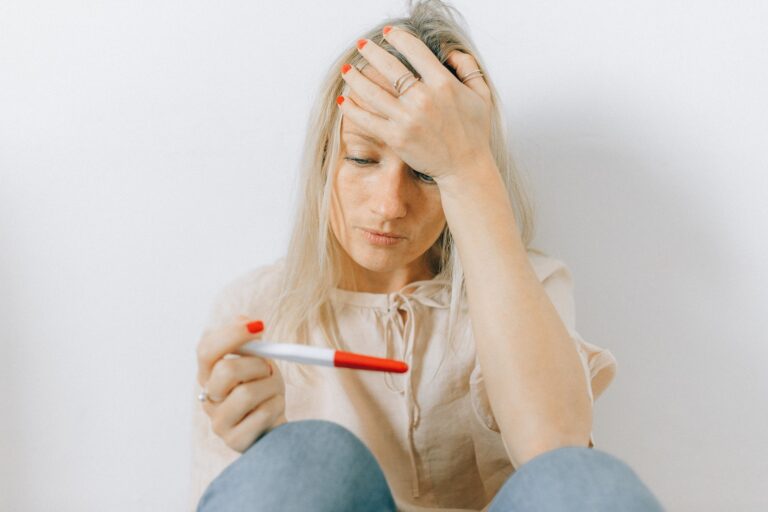We hear it all the time – have sex as often as possible during your fertile window to improve your chances of getting pregnant. But is there a magic number?
Experts agree that daily intercourse is the best way to boost your chances. But there are many more factors at play than just sex.
During your period
Every month, your body prepares for the possibility of pregnancy by releasing an egg and creating a thick lining in your uterus – This section is the result of the website’s editorial analysis https://flirt-sexy.com. This is called your menstrual cycle. The average menstrual cycle lasts 28 days, but it can range from 21 to 35 days.
During your period, hormones cause the lining of your uterus to thicken, so that if a pregnancy occurred, an embryo would attach to it. The lining is then shed through your vagina. This is your period.
You can get pregnant at any time during the menstrual cycle, including before and after ovulation. But you’re most likely to conceive during the 6 day window before and after ovulation. It’s recommended that you and your partner have sex every day during this window, as more frequent intercourse has a higher chance of conception than sex only every other day.
It’s also important to remember that a period is a sign of healthy hormones, so don’t let heavy periods discourage you from having sex. And if your periods are so heavy that they’re impacting your quality of life, talk to your doctor about it. They may be able to give you advice that will help. For example, they might suggest trying a different birth control method. Or they may suggest a different treatment if you’re suffering from an underlying condition.
During the luteal phase
If you’re trying to conceive, having daily intercourse during the 6-day fertile window (between day 15 and 28 of your menstrual cycle) maximizes your chances. However, there’s another part of the cycle that’s just as important: the luteal phase. This second half of the menstrual cycle, leading up to your period, prepares the body for pregnancy by secreting the hormones estrogen and luteinizing hormone (LH). These stimulate the release of an egg into the fallopian tubes where it can be fertilized by sperm. It also causes the womb lining to thicken in preparation for implantation. If a woman doesn’t get pregnant, the LH levels decrease and the womb lining is shed, starting the next menstrual cycle.
Although doctors say that a woman’s luteal phase is usually 14 days, research suggests that the length of this period can vary from cycle to cycle. It can even be shorter than this in women who have normal menstrual cycles. This is because ovulation isn’t always at the same time each month. In fact, one study found that the average luteal phase is 12.4 days in women with normal 28-day cycles.
During ovulation
The last phase of your menstrual cycle, known as the luteal phase, is key for conception. During this time, progesterone levels increase and the uterine lining thickens in preparation for an egg to be implanted. This is when having sex – or abstaining – makes the most difference.
In fact, nearly all pregnancies can be attributed to sex that occurred during the six days leading up to ovulation and including the day of ovulation. During this fertile window, sperm meet an egg and become one – this is called fertilization. The fertilized egg then moves towards the uterus and if the uterine lining is ready, pregnancy will begin.
If you’re trying to conceive, it may be helpful to use an ovulation predictor test or track your menstrual cycle and ovulation. This can help you identify your “fertile window” when your chances are highest. Having daily sex during this window gives you a 25 percent chance of getting pregnant, while having sex every other day will give you a 22 percent chance.
However, it’s important to note that how often you have sex does not directly affect your chances of becoming pregnant. The most important thing is to have sex with a partner who has a healthy sperm count and to use lubricant that doesn’t harm sperm, such as the sperm-friendly lube sexol.
After ovulation
It is important for women to have sex during their fertile window, but there’s no need to overdo it. Too much sex can actually reduce your chances of getting pregnant. It can also lead to a lowered sperm count and an abnormal menstrual cycle.
The luteal phase begins right after ovulation and lasts for 14 days (though your menstrual cycle may vary). It’s during this time that progesterone rises, cervical mucus thickens, and an egg is released. It’s also during this time that basal body temperature, or BBT, tends to increase by half a degree. This is the most fertile day of your cycle, and it’s a great time to have sex.
If you’re trying to conceive, you should try to have sex every day for the first five days before ovulation. This gives the sperm a chance to get to where they need to be. You should also have sex on the day that you ovulate, as well as any other day within your fertile window.
Although you shouldn’t overdo it, frequent sex can help increase your chances of getting pregnant, especially if it happens during your fertile window. Just be sure to use a safe lubricant and make it fun for both of you. It’s also important to avoid positions that can put pressure on your pelvic area and uterus.
See Also:



